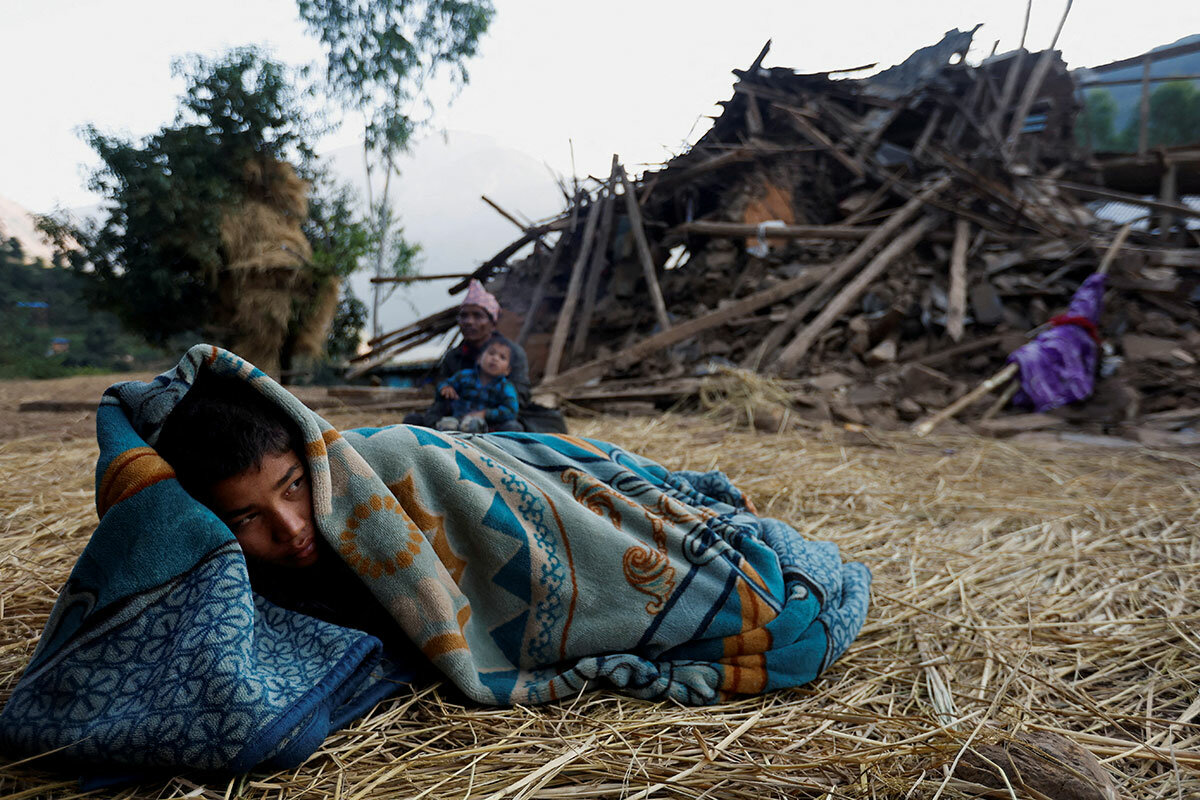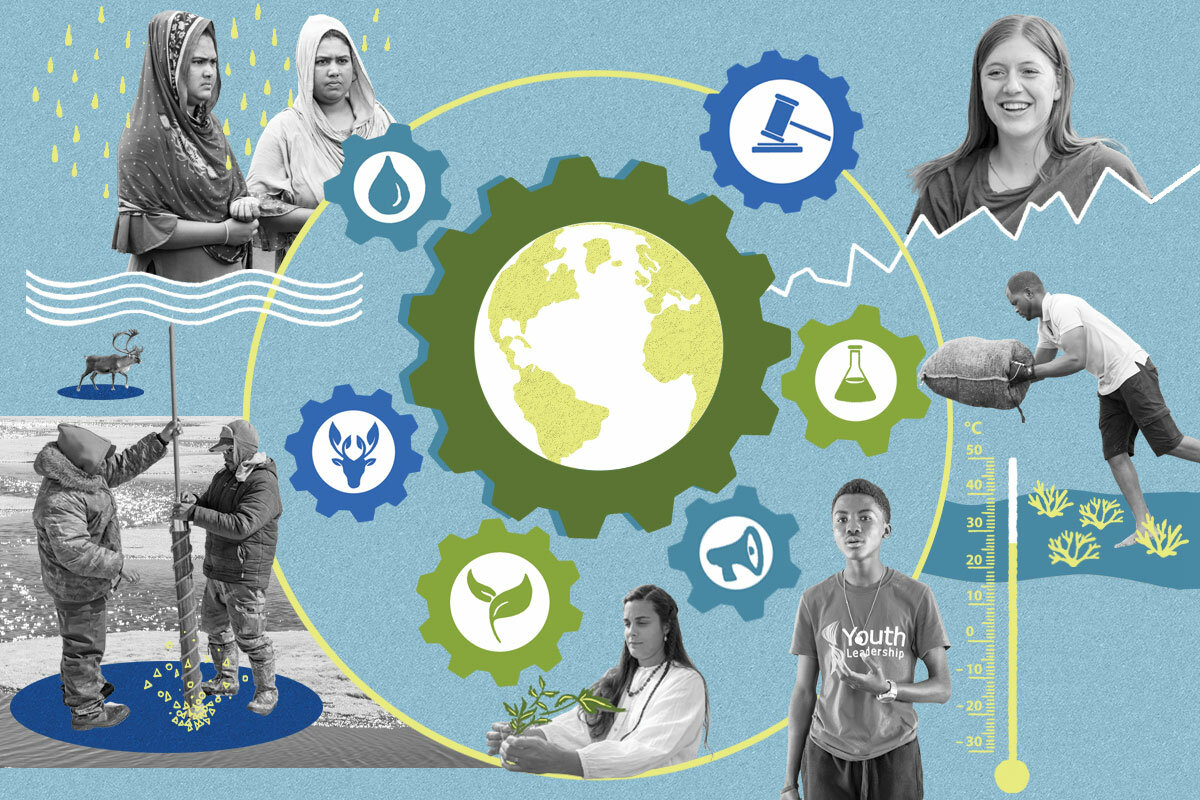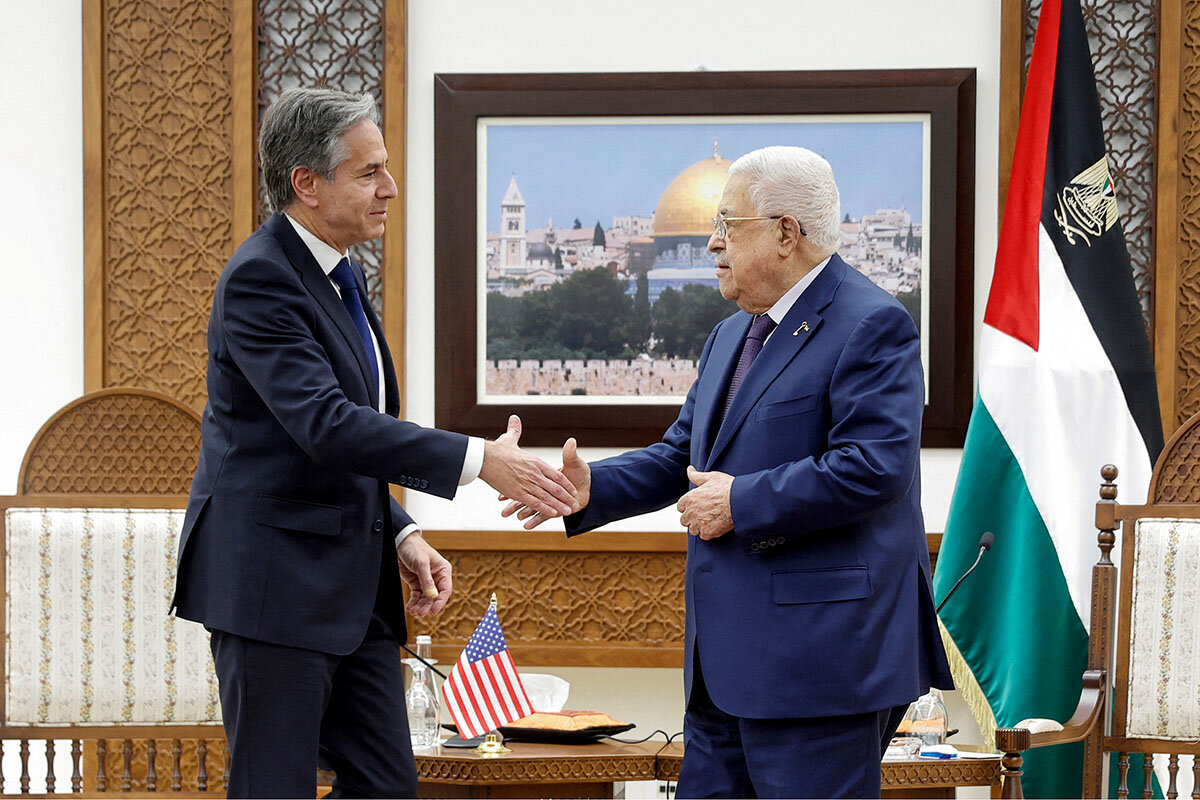Our new solutions series about the global climate crisis represents a huge investment on our part. We sent our reporters to the farthest corners of the world. Why? Climate is the subject of so much despondence and division. Through the eyes of these young people, however, we see a different picture – neither as simplistic as we often hear, nor as hopeless.

Why is Christian Science in our name?
Our name is about honesty. The Monitor is owned by The Christian Science Church, and we’ve always been transparent about that.
The Church publishes the Monitor because it sees good journalism as vital to progress in the world. Since 1908, we’ve aimed “to injure no man, but to bless all mankind,” as our founder, Mary Baker Eddy, put it.
Here, you’ll find award-winning journalism not driven by commercial influences – a news organization that takes seriously its mission to uplift the world by seeking solutions and finding reasons for credible hope.
Explore values journalism About usMonitor Daily Podcast
- Follow us:
- Apple Podcasts
- Spotify
- RSS Feed
- Download
 Mark Sappenfield
Mark Sappenfield
Not long ago, we asked if the dramatic disruptions to normal weather patterns around the world might soon bring a tipping point in public opinion. Today, we offer one answer.
Below is the first installment in our series about what we’re calling the Climate Generation. For many young people who have grown up amid the climate crisis, the tipping point is well past. From Namibia to the Canadian Arctic, they are at the forefront of seeking solutions. Their stories are not ones of despair, but ones of grounded optimism and resolve.
Already a subscriber? Log in
Help fund Monitor journalism for $11/ month
Monitor journalism changes lives because we open that too-small box that most people think they live in. We believe news can and should expand a sense of identity and possibility beyond narrow conventional expectations.
Our work isn't possible without your support.
Today’s stories
And why we wrote them
The Climate Generation
( 17 min. read )
( 6 min. read )
We wrote last week that pressure would mount on the United States the longer Israel’s massive counteroffensive continued. So it has, faster than anticipated. Does the U.S. prioritize humanitarian aims only when convenient? The Biden administration is scrambling to prove otherwise to allies at home and abroad.
( 3 min. read )
In the legal proceedings against him, former President Donald Trump has largely avoided taking the stand. At a New York fraud trial today, he spoke. The takeaway? Whether he’s in a courtroom or on the campaign trail seems to make no difference. Mr. Trump’s message and manner remain the same.
( 6 min. read )
The world is awakening to the fact that bullying is not just kids being kids. In France, that awakening happened last spring when a 13-year-old girl died by suicide. Finding the right response has been hard. But schools are making progress, and others are stepping in to help, too.
Essay
( 3 min. read )
Does anyone really need three copies of Stephen King’s “The Dark Tower I: The Gunslinger”? In this essay, one woman’s get-rich-quick scheme to sell her own books ends in abject failure, because every book is precious. Maybe two copies of “The Gunslinger” are enough. Maybe.
The Monitor's View
( 3 min. read )
As Israel escalates its counteroffensive against the Hamas military in Gaza, another intense effort has begun in the Middle East. It is one that favors a strategy of nonviolence and builds off rising sentiments against the futility of violence to resolve grievances or claim dominance.
Diplomats, for example, are shuttling between capitals to seek a consensus on a “humanitarian pause” in the Gaza fighting. The Palestinian Authority that rules the West Bank has reasserted its commitment to peaceful tactics as one reason for it to govern postwar Gaza. And in a bold statement Oct. 26, nine Arab countries rejected “attacks on civilians, all acts of violence and terrorism against civilians.”
Note the “all acts of violence.” In decades past, many of those states – Egypt, Jordan, the United Arab Emirates, Bahrain, Saudi Arabia, Oman, Qatar, Kuwait, and Morocco – might have supported an attack on Israel like the one by Hamas on Oct. 7, or even joined in. Not at this historic moment.
To be sure, Arab leaders face pressure from mass protests against Israel’s attacks on Hamas targets that have led to large civilian casualties. Yet tellingly, the protests have been largely nonviolent. Polls in the region by Arab Barometer over many years have shown a drop in acceptance of violence for political purposes. And while the Palestinian cause for a homeland remains popular in much of the Arab world, a Washington Institute poll in July found “attitudes toward the terrorist groups attempting to claim it are decidedly unpopular.”
“The peaceful nature of this wave of Arab mass mobilization reflects a growing trend to renounce violence as a means of pursuing political objectives and a desire for stability following the turbulent years following the 2011 Arab Spring,” writes Amr Hamzawy, a senior fellow and the director of the Carnegie Middle East Program in Washington and a former member of Egypt’s Parliament.
“Together, the mainstream Arab public space put forward pro-peace and pro-life values without any attempt to justify Hamas actions – neither with references to the ongoing occupation and siege of the Palestinian territories nor by evoking militant Islamist anti-Jewish rhetoric that has lost its popular appeal in recent years,” Mr. Hamzawy added.
This trend toward nonviolence in the Arab street, Mr. Hamzawy states, may be the “launchpad for a possible revival of the peace process between Israelis and Palestinians, with wide Arab backing for the first time.”
Just before the Oct. 7 attack, one Palestinian peace activist based in Jerusalem, Professor Mohammed Dajani Daoudi, told a crowd in New York City why he remains optimistic about nonviolent ways to bring Arabs and Israeli Jews together. He said he has learned to leave the past and the present to historians and deal with the future.
“We have inherited from our grandparents this conflict, and so it is our duty to plant seeds of love, seeds of peace, so that we can leave a different inheritance to our grandchildren,” he said.
As Israel seeks a military solution to the Hamas use of intentional violence against civilians, peaceful tactics are competing to resolve this recurring conflict.
A Christian Science Perspective
Each weekday, the Monitor includes one clearly labeled religious article offering spiritual insight on contemporary issues, including the news. The publication – in its various forms – is produced for anyone who cares about the progress of the human endeavor around the world and seeks news reported with compassion, intelligence, and an essentially constructive lens. For many, that caring has religious roots. For many, it does not. The Monitor has always embraced both audiences. The Monitor is owned by a church – The First Church of Christ, Scientist, in Boston – whose founder was concerned with both the state of the world and the quality of available news.
( 3 min. read )
Praying daily establishes within us a firm foundation, from which we can help and heal in even the most dire situations.
Viewfinder

A look ahead
Thanks for joining us today. Tomorrow, we’ll take a look at a gun rights case before the United States Supreme Court.
Last week, we wrote about how American communities are shifting the conversation around mass shootings to a right to public peace. The case the Monitor’s Henry Gass examines tomorrow will be crucial in determining how far communities can go in passing gun laws. Can jurisdictions seize weapons from domestic abusers subject to restraining orders? Be sure to come back and give it a read.








